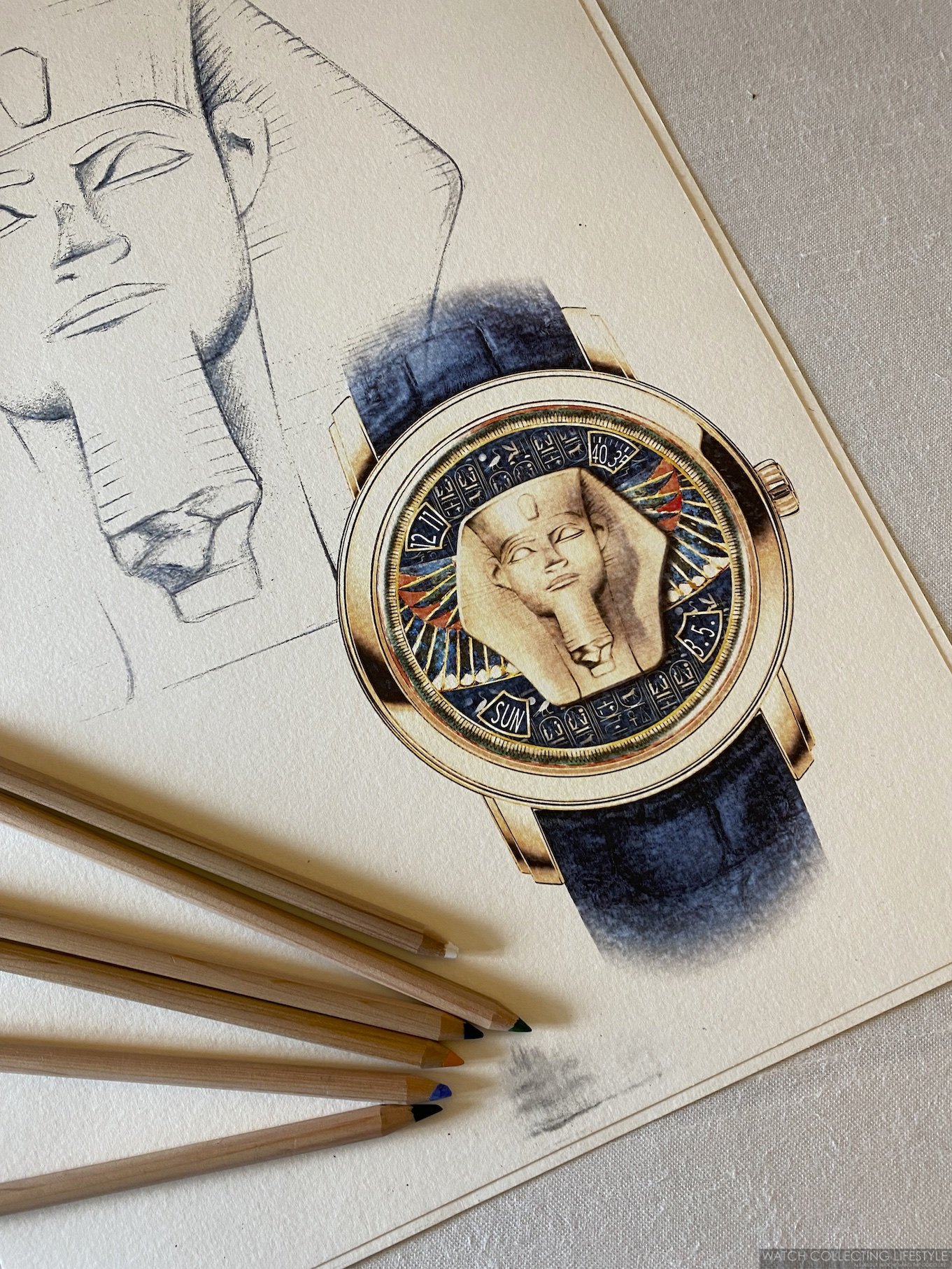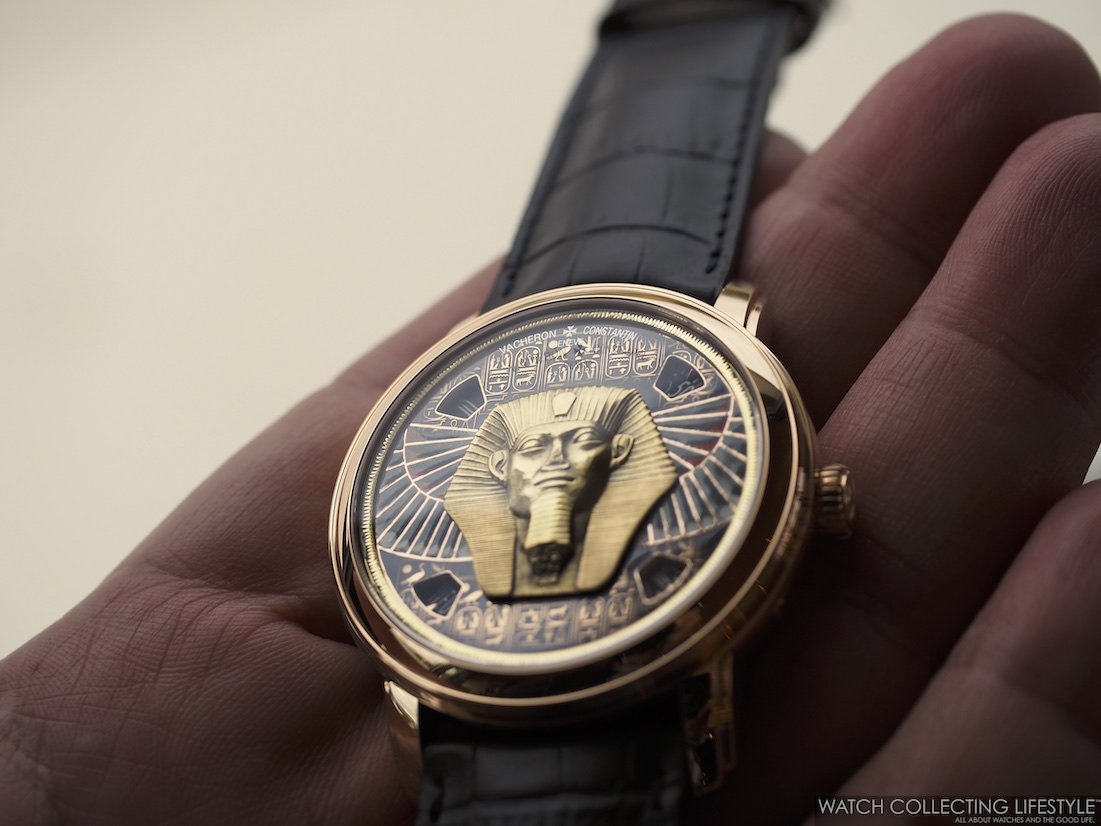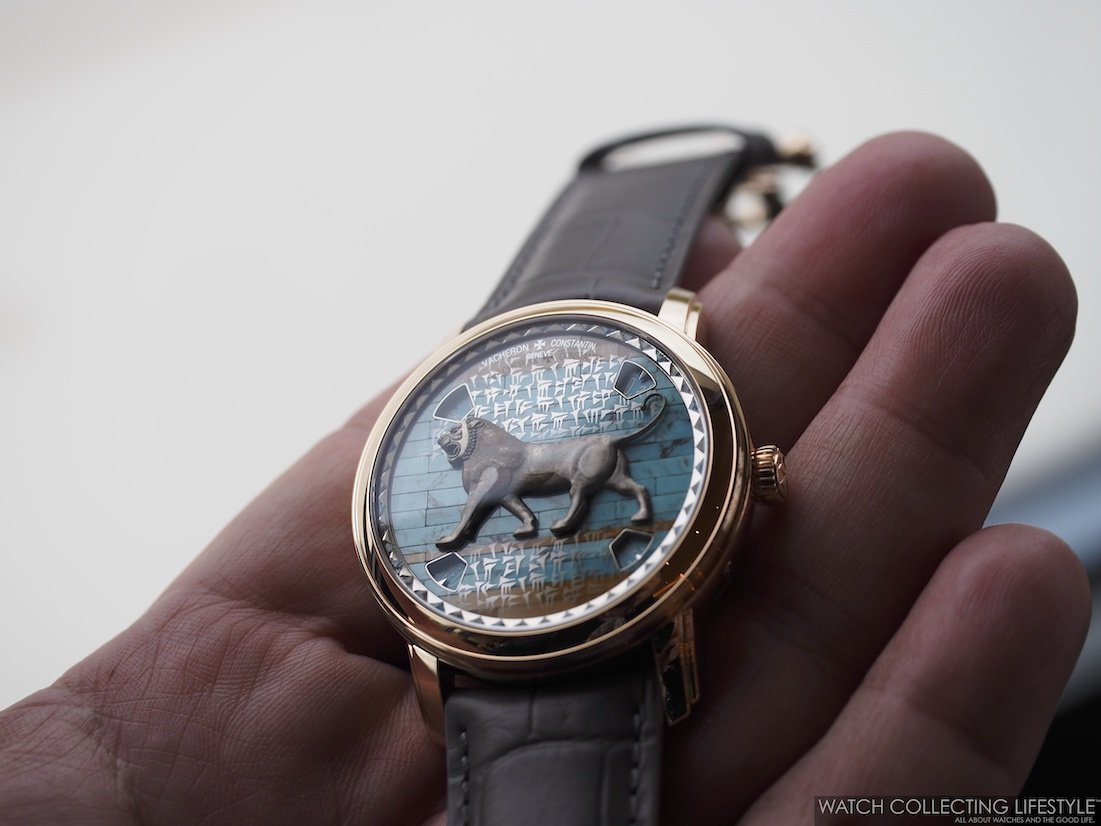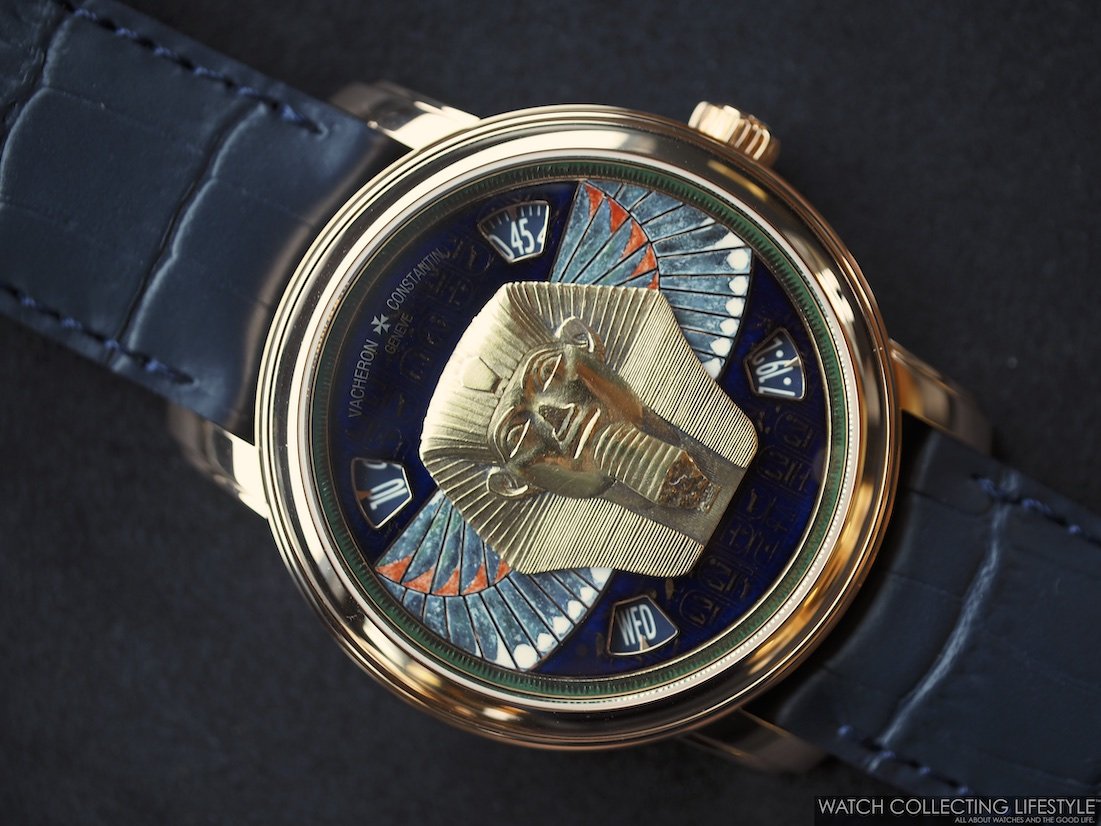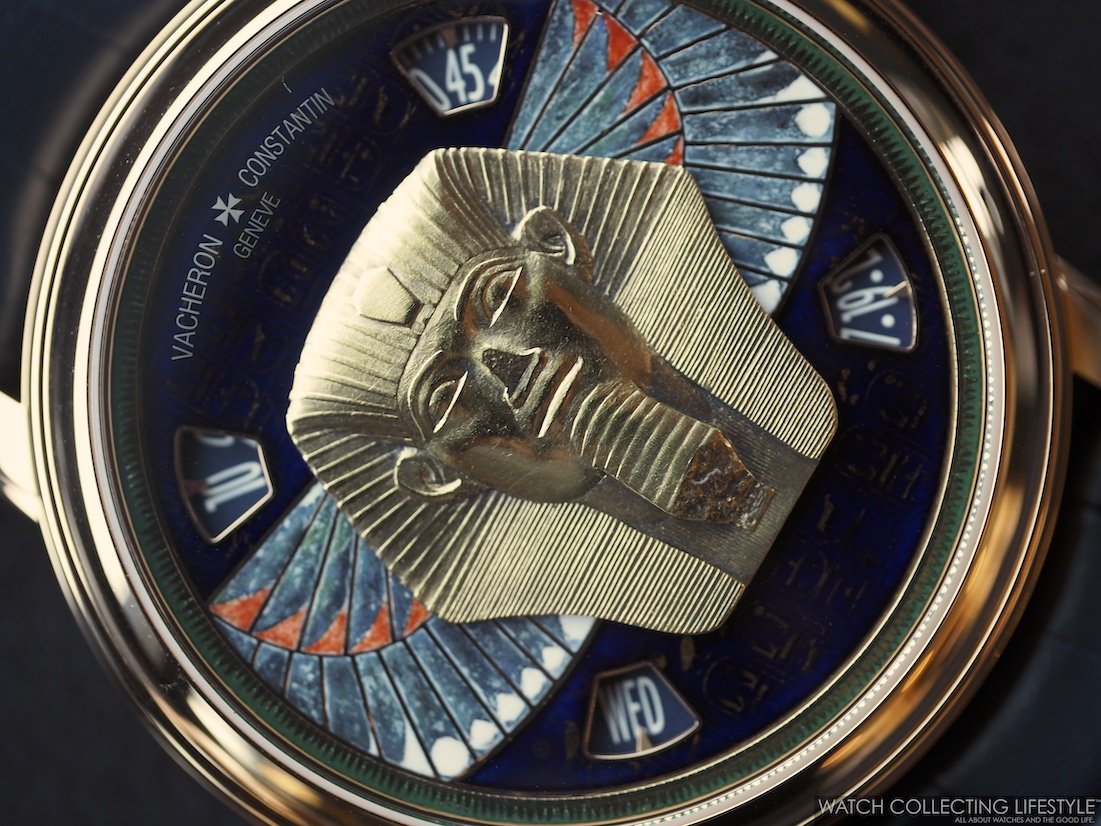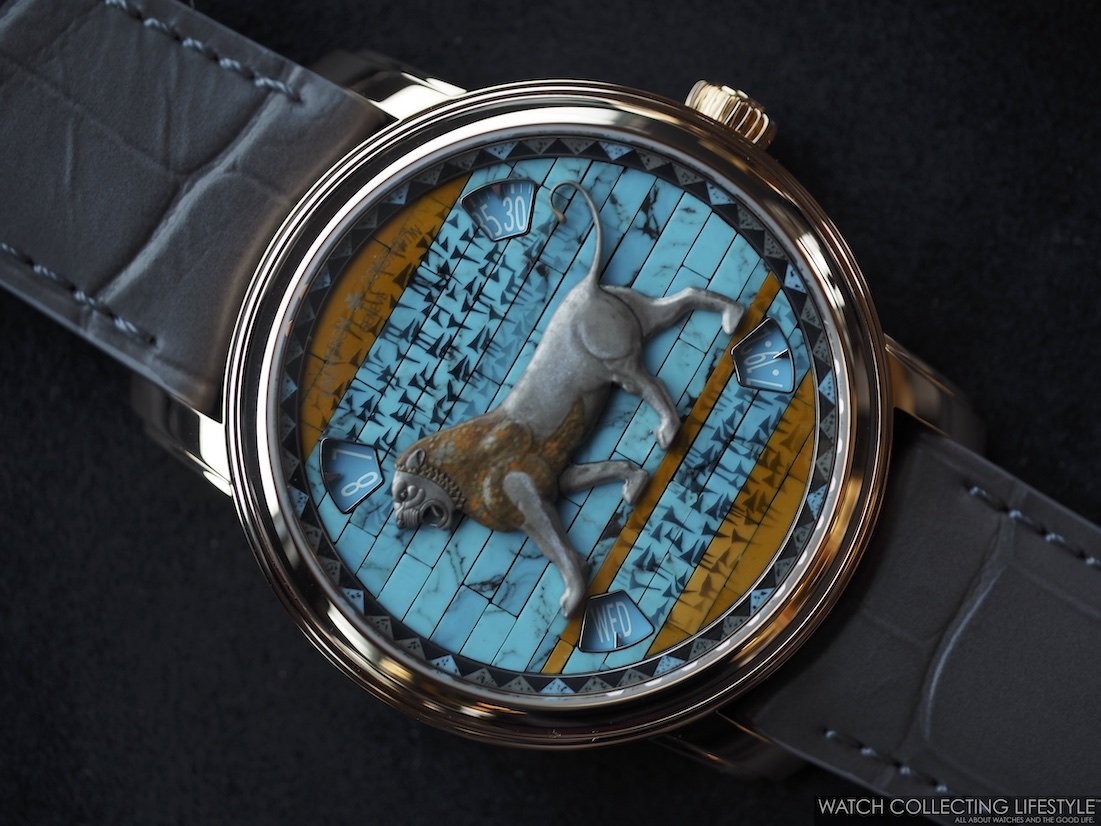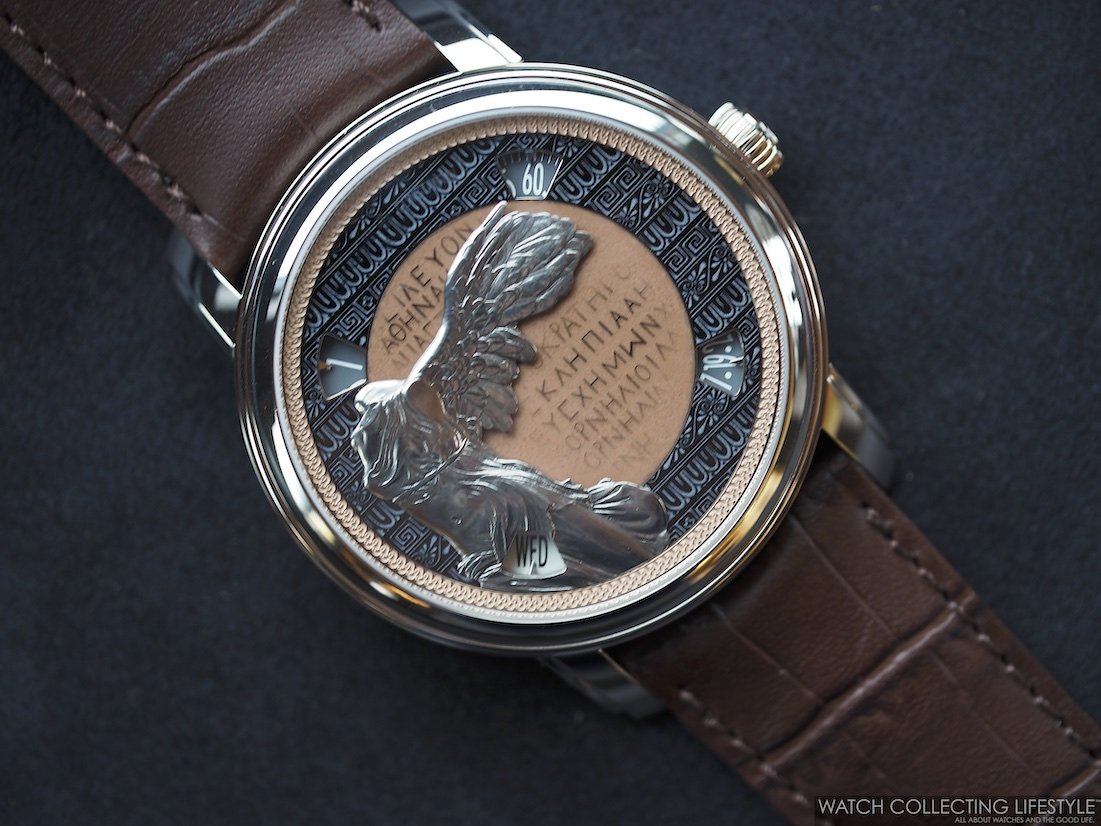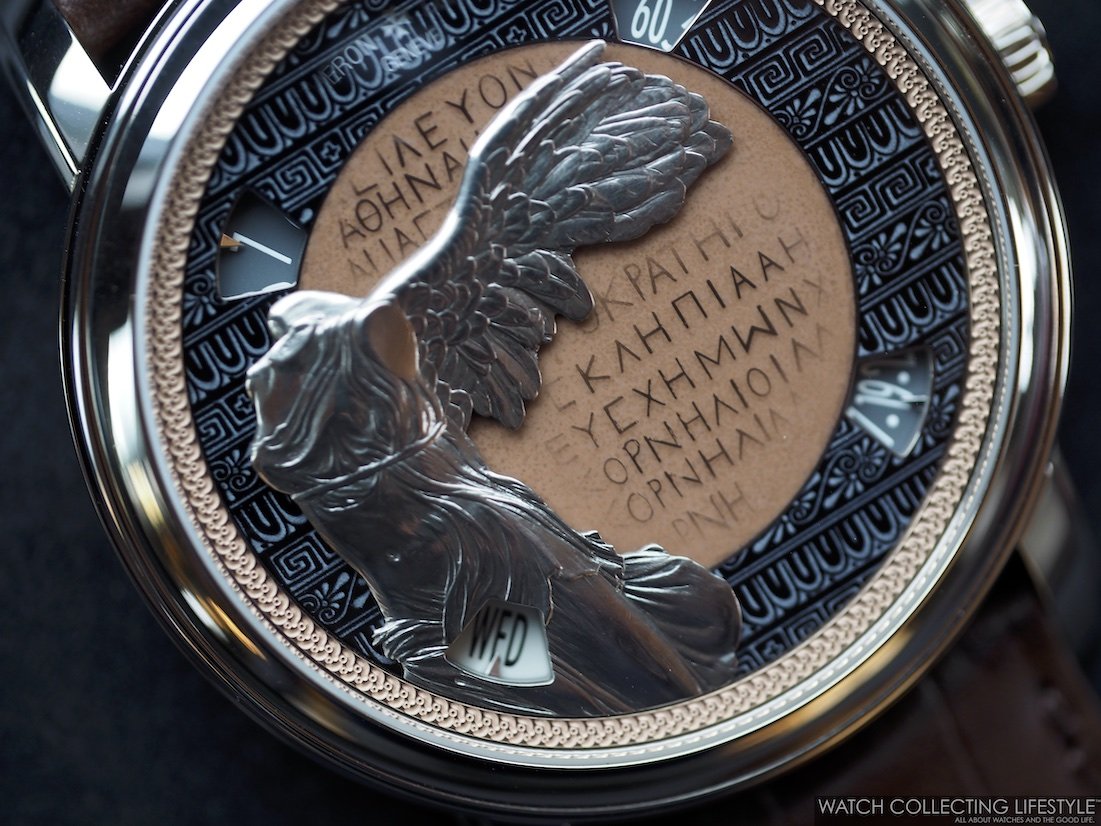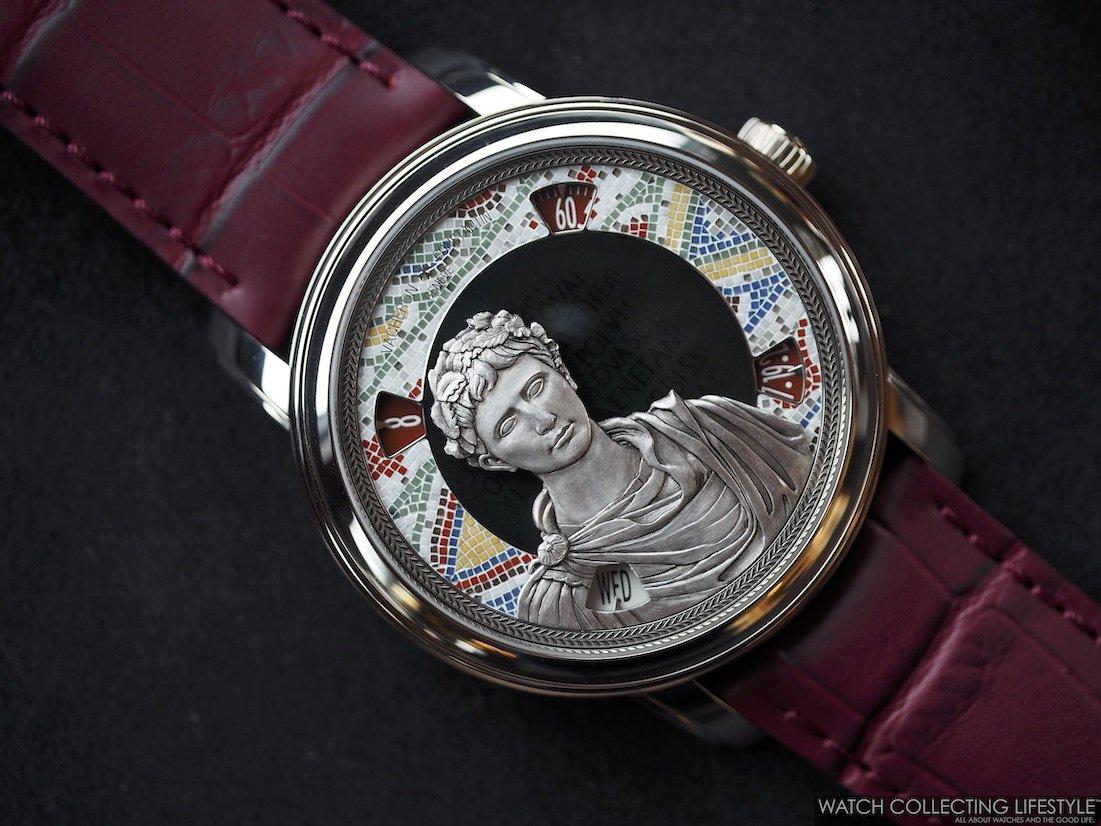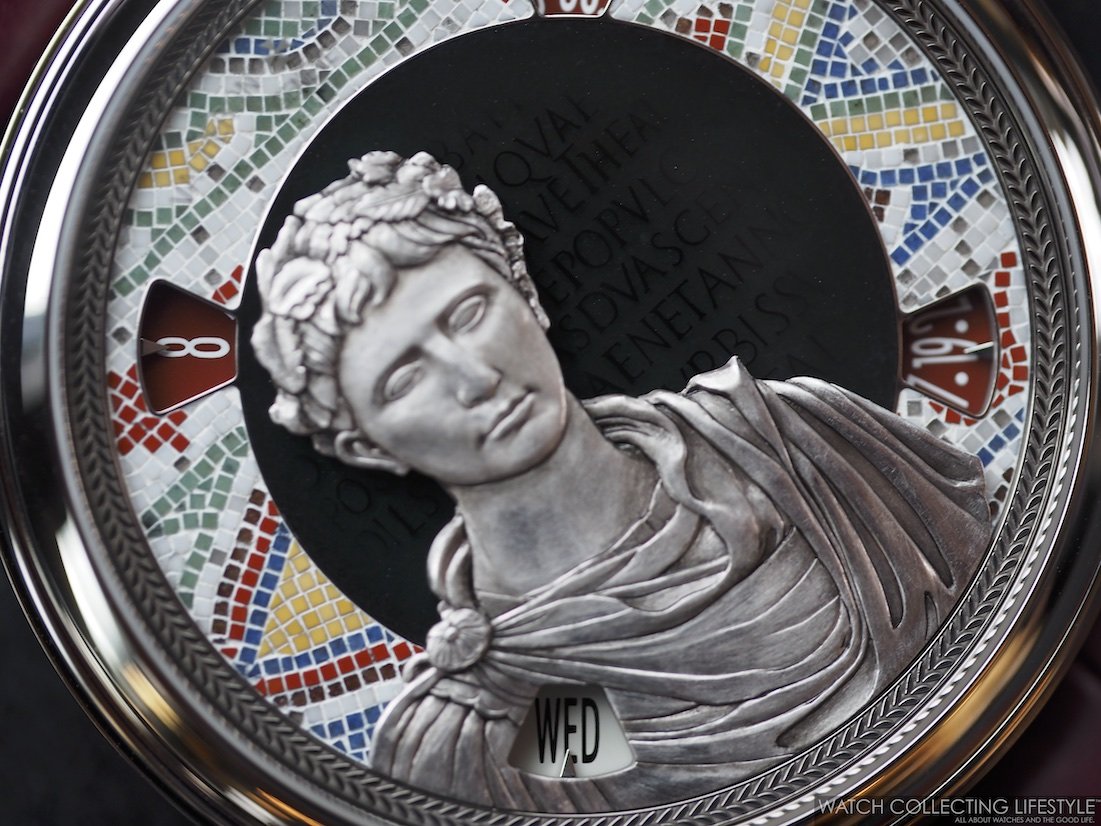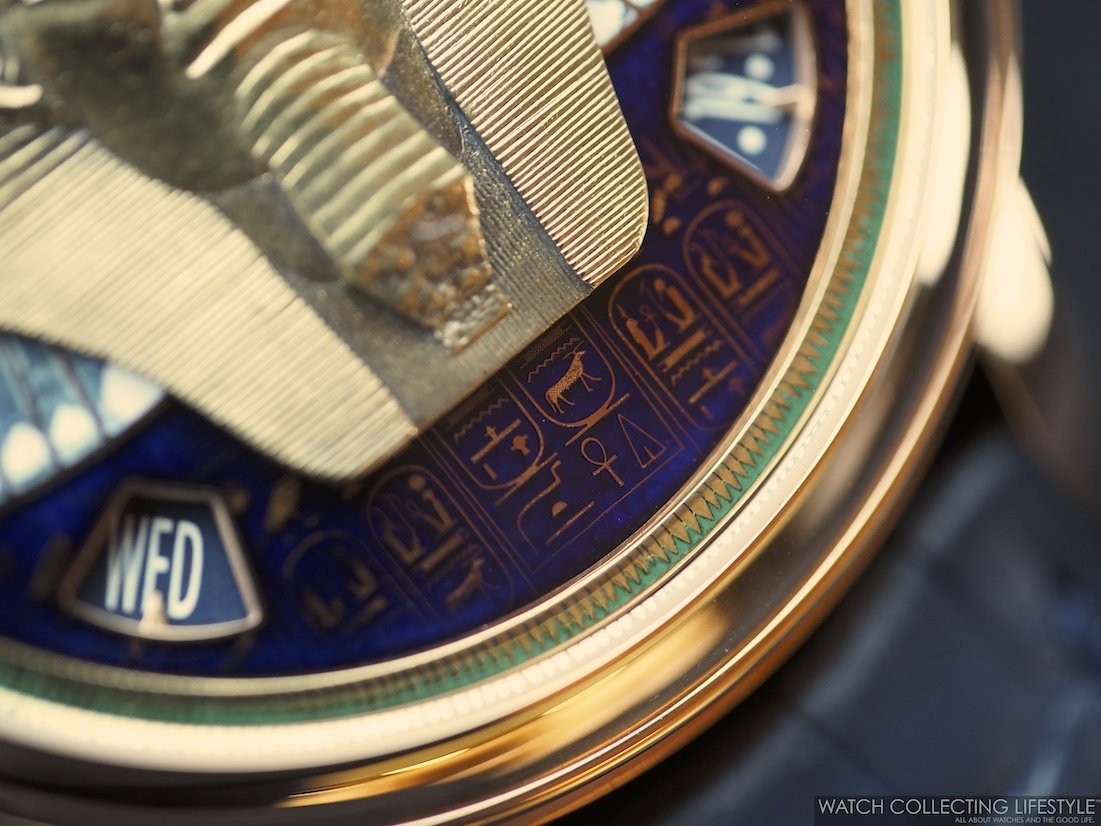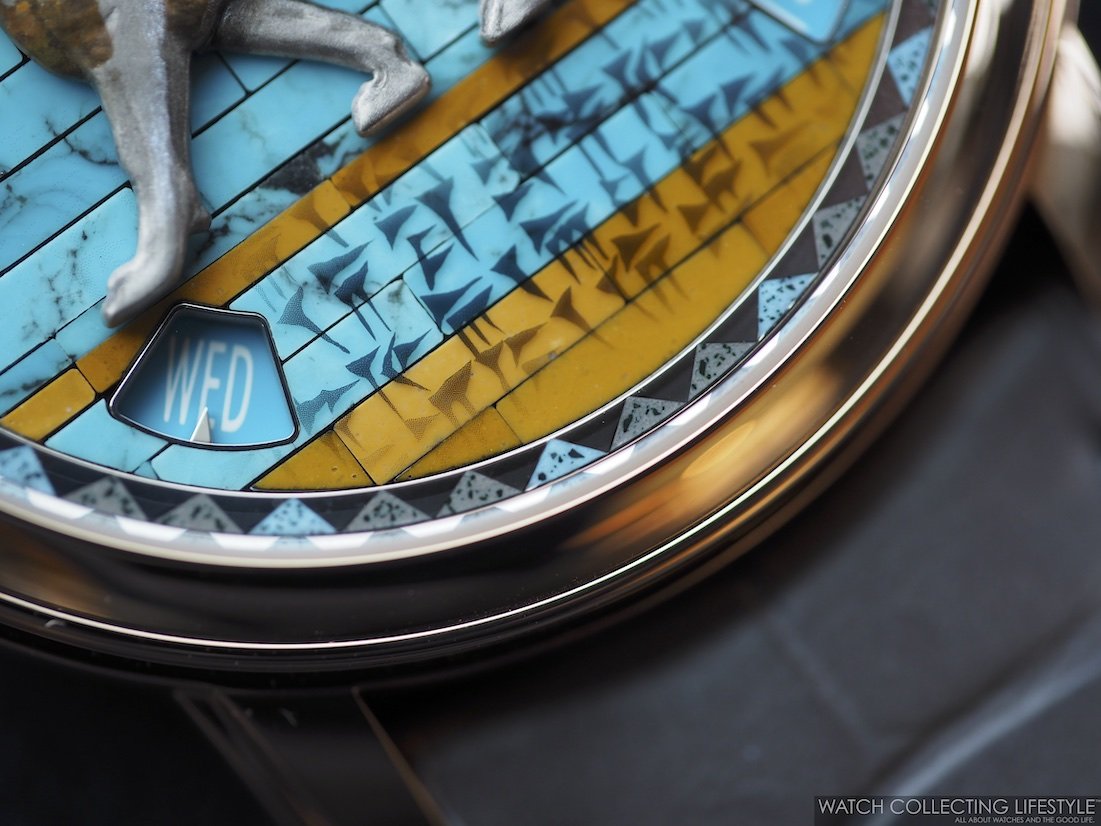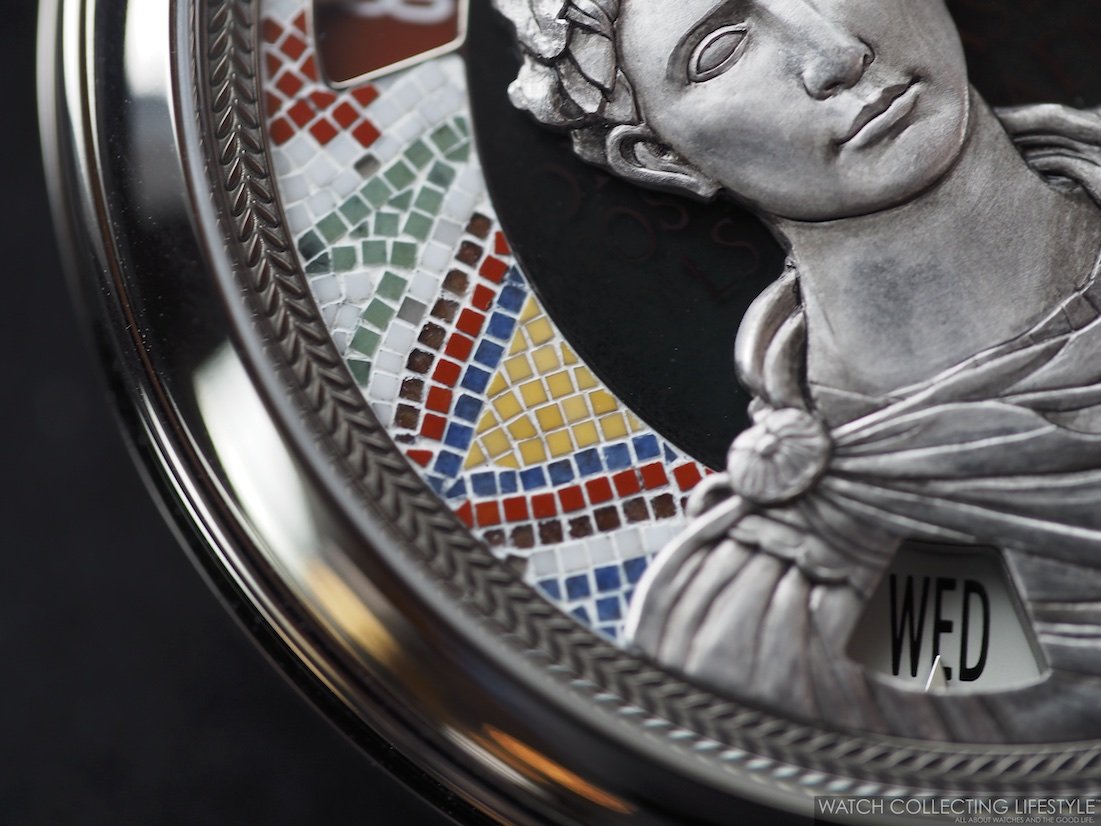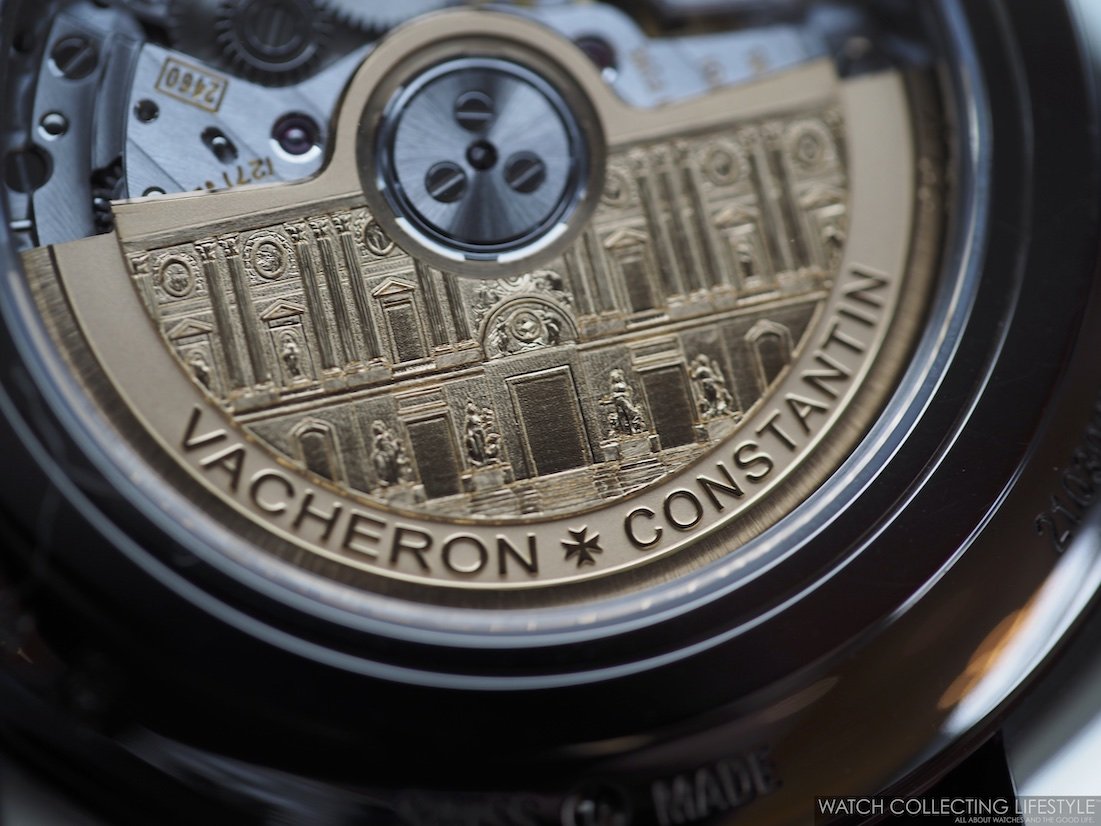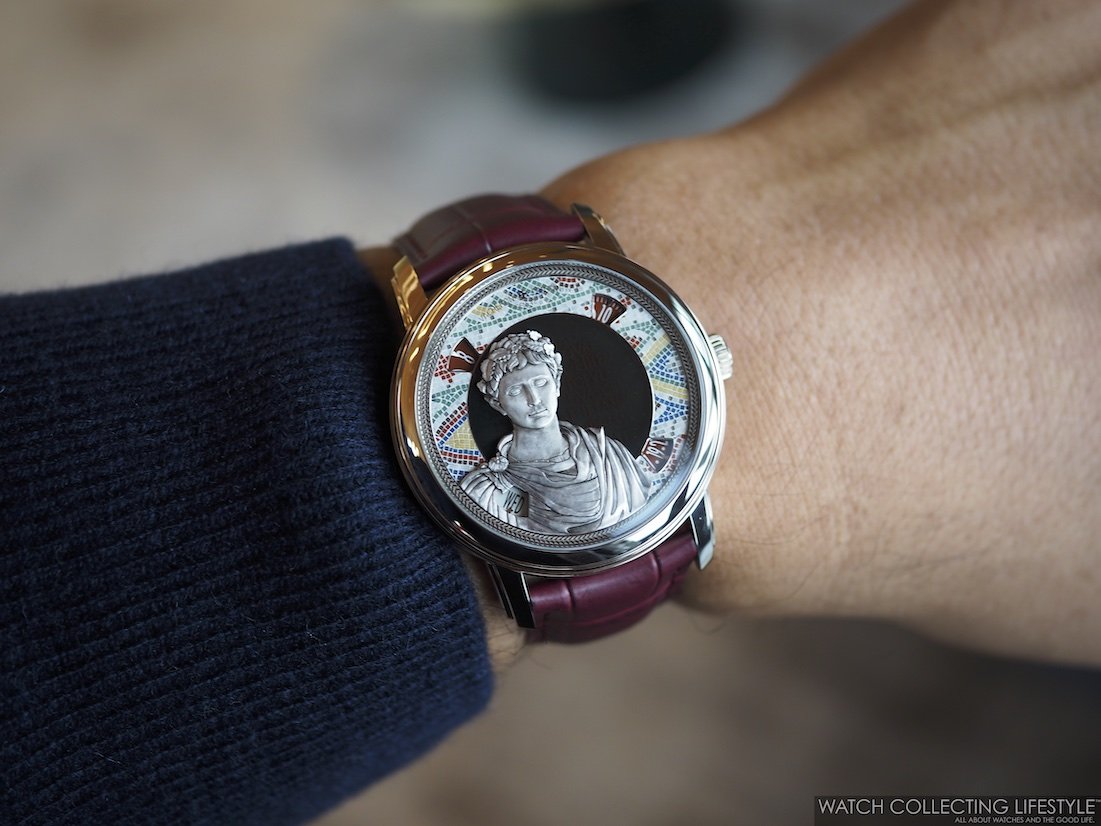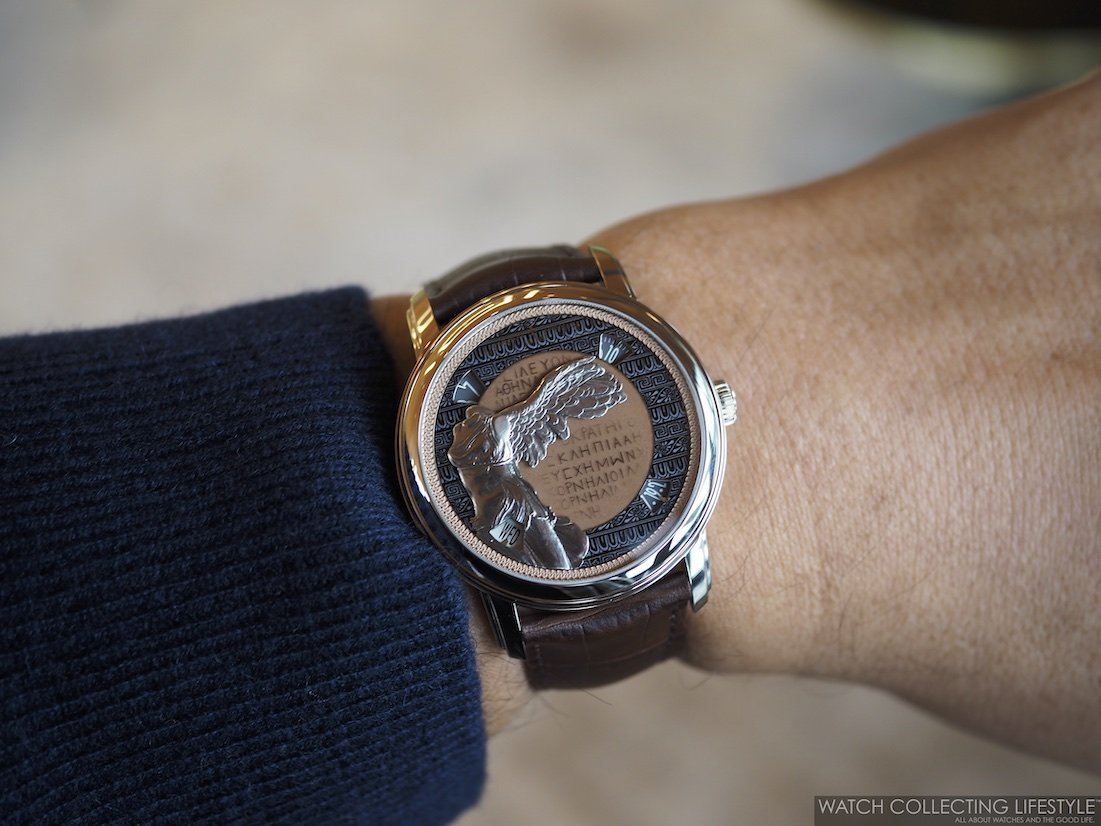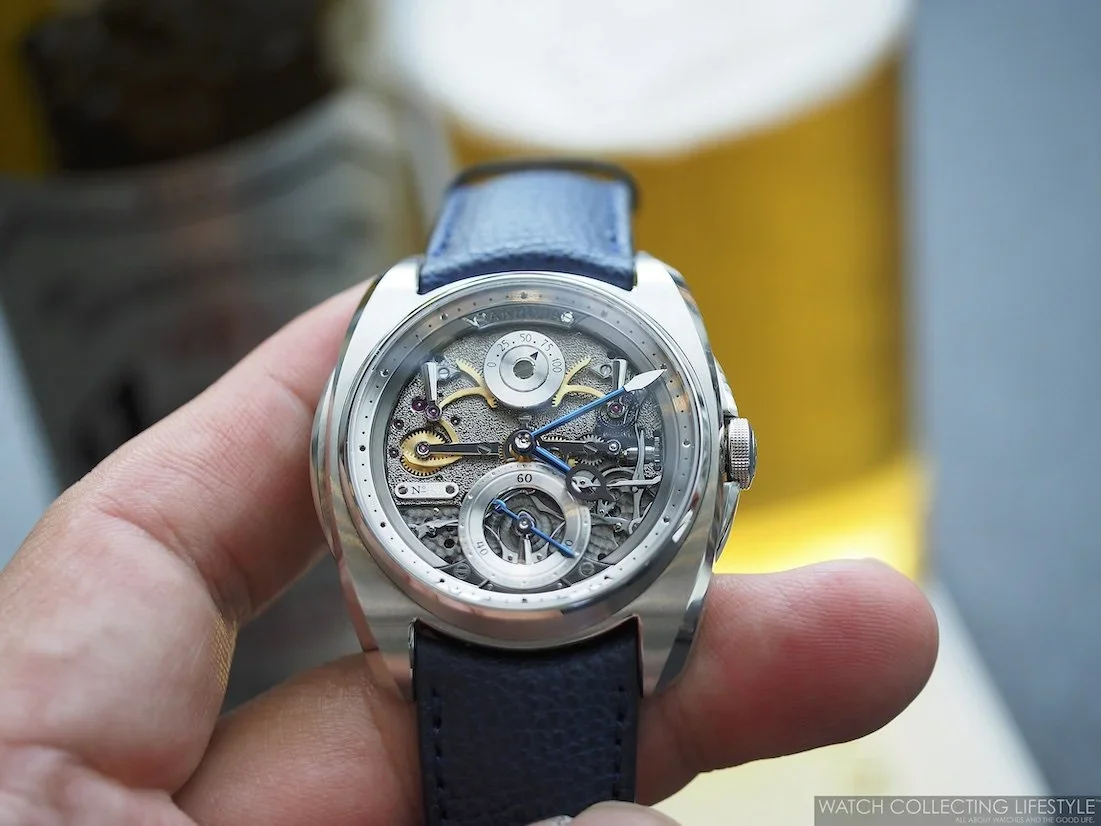The partnership between Vacheron Constantin and the Louvre Museum has given rise to a series of Métiers d’Art watches paying tribute to the great civilisations of Antiquity. Four masterpieces from the museum, representative of four eras, are individually depicted on the dials. These cultural symbols, created in the form of sculpted gold appliques, are placed on a dial whose ornamentation is inspired by the decorative arts of the corresponding period. These four different watches are available in a highly exclusive edition of five pieces each. The Persian Empire of Darius the Great, the golden age of Ancient Egypt, the Hellenistic period of Ancient Greece and the rise to power of Augustus, the first Roman emperor, are the historical anchor points of Vacheron Constantin’s new Métiers d’Art Tribute to Great Civilizations.
In 2019 Vacheron Constantin established a partnership with the Louvre Museum following intense collaboration with its curators and historians, to create artistic masterpieces are at the center of an exceptional watchmaking show staged by skilled craft makers. In close collaboration with the museum’s teams, Vacheron Constantin’s designers and developers therefore undertook to create a new series
of Métiers d’Art watches directly inspired by emblematic masterpieces of the Louvre. Vacheron Constantin, founded in 1755, and the Louvre, which opened its doors to the public some 40 years later, in 1793, share a concern for archiving, conservation and restoration, with the promise of perpetuating the related arts and crafts. This shared attachment to the splendors of the past and the transmission of knowledge has already paved the way for several joint initiatives by the two partners. Vacheron Constantin has supported the restoration of the clock named La Création du Monde, a masterpiece of 18th century precision horology presented to King Louis XV in 1754. The Maison also participated in a recent on-line Louvre auction by offering a single-piece edition Les Cabinotiers, whose dial was to reproduce in enamel an artwork kept in the museum and selected by its buyer.
Things to Know About the Watches
In agreement with the teams at the Louvre Museum, the choice to work on four particular pieces was quickly made from both cultural and artistic standpoints. The selection was based on four main themes covering
as many great periods and ancient civilizations and four major works representing them. Thanks to the richness and originality of the themes and the remarkable quality of execution, these watches resulting from the collaboration between Vacheron Constantin and the Louvre all feature narrative content magnificently conveying the splendor of fine craftsmanship.
All four watches are cased in generous 42 mm cases in either 18K pink gold or 18K white gold and available in a limited edition of five pieces each. Sold as a full set of four or individually, these watches bring the best of Vacheron Constantin in an incredible collaboration with the Louvre Museum.
The first of them in 18K rose gold depicts the Grand Sphinx de Tanis from the Ancient Egyptian Empire —2035-1680 BC. The Great Sphinx of Tanis, capital of the kings of the 21st and 22nd dynasties, is 1.83 meters high and 4.80 meters long. It is one of the largest sphinxes preserved outside Egypt. It arrived in the Louvre in 1826, as part of the collection of the British consul Henry Salt. A royal symbol, the sphinx is a hybrid comprising the body of a recumbent lion and a human head wearing the Nemes —the royal headdress par excellence— as well as the beard worn only by sovereigns.
Then comes the Lion de Darius from the Persian Empire of the Achaemenids —559–330 BC— in 18K rose gold. The Frieze of Lions, a glazed brick decoration, was located in the first courtyard of the palace of Darius the Great in Susa, the capital of the Persian Achaemenid Empire in southwestern Iran. After freeing themselves from the control of the Medes and conquering Lydia, Babylon and Egypt, the Achaemenids formed one of the greatest empires to have ever existed in antiquity. With a territory stretching
from present-day Pakistan to the shores of the Black Sea, and from the steppes of central Asia to Egypt and Libya, it united the oldest civilizations in the Middle East. Darius the Great is remembered for his confrontation with the Greek cities who succeeded in stopping his armies on the Plain of Marathon.
The third piece in 18K white gold honors the Victoire de Samothrace from the Hellenistic Greece of the Antigonid dynasty —277–168 BC. This statue of Victory, a winged goddess resting on the prow of a warship, was discovered in 1863 on the island of Samothrace in the northern Aegean Sea. Excavated from a sanctuary dedicated to the Great Gods, who were widely worshiped throughout the Greek world, it depicts an offering linked to a naval victory. Following the death of Alexander in 323 BC, his generals shared his legacy, giving
rise to three great empires, including that of the Antigonid dynasty in Macedonia.
The fourth piece in 18K white gold features a representation of the Buste d’ Auguste from the Roman Empire of the Julio-Claudians —27 BC-68 AD. This bust of Octavian Augustus, the adopted son of Caesar, represents him crowned with an oak wreath, a distinction awarded him by a Senate decision in 27 BC, when he became the principate or first citizen of Rome. In actual fact, following his conquest of Egypt, where he defeated Mark Antony, an ally of Cleopatra, he ended a long period of civil wars marking the end of the Republic and
becomes master of Rome. He is now considered the first Roman emperor and lays the foundations of a political organization that would last another four centuries.
The dial and its frieze are thus composed of several decorative elements taken from various works of the same period as the one depicted in the applique. To create these splendid backgrounds, Vacheron Constantin has opted for different techniques implemented by various craft makers. The techniques include:
champlevé enamel and grisaille enamel, stone marquetry, stone micro-mosaic, and metal engraving.
Enamelling is a decorative technique in which colored glass or enamel pigments are finely ground and mixed with water or oil and applied to a metal surface. This paste is then fired at a high temperature to form a resistant surface that becomes one with its base. Champlevé enamel consists of creating cavities in which the enamels are applied. The successive layers are fired in a kiln. Grisaille enamel is a technique that appeared in the 16th century and consists of applying white enamel touches to an underlying dark enamel
dial coating. Each layer of enamel is also fired at over 800-degree Celsius.
Stone marquetry is rarely used in watchmaking, stone marquetry consists of forming patterns using fragments of colored stones calibrated according to requirements. This operation is all the more delicate as each stone is different, with some being veined and therefore more fragile. These fragments are assembled and glued one by one without any binder between the stones. This construction leaves tiny spaces
between the components, giving relief and depth to the composition.
Stone micro-mosaic is an extremely rare technique in watchmaking refers to mosaic work in which the tiny elements of hard stones forming the decoration are very finely assembled and glued in such a way as to render the joints that seal them practically invisible. The size of the stones —tiny squares measuring just 0.55 mm each— makes this type of ornamentation particularly delicate, not only in the composition of the motifs but also in the way it is set with a binder.
Engraving is the art of hand engraving creating decorations in hollow, in relief or in the form of a model out of the metal. The pounced ornament technique used here for the carved gold sconces is called ramolayage. It consists of removing the material to model the relief. Irreversible, this operation requires a perfectly assured gesture. The master engraver first draws the main volumes with a drypoint. Then he sculpts the mass and makes a particularly delicate rounding whose contours are accentuated by patina. This trompe l’oeil technique is particularly suitable for creating the illusion of depth of field. Some friezes are made in intaglio or engraving by digging the material.
Vacheron Constantin Métiers d’Art Grand Sphinx de Tanis
On the monumental Grand sphinx de Tanis model, the work of cutting the stone with polished surfaces is admirable in its precision. For the engraver of the carved gold applique representing the head of the sphinx, one of the difficulties lay in rendering the large false beard within such a small space. The master artisan had to work in relief using the pounced ornament technique, despite the thinness of the plate, before accentuating the depth effect by patinating the material with a blowtorch and then by hand. The main dial is made of enamel whose deep color, a mixture of blue and black enamels, is obtained after six firings in the kiln. The necklace is trimmed with petals that are reproduced in champlevé enamel sprinkled with inclusions to give the outer frieze an aged appearance. Under this necklace, a winged hawk with a ram’s head appears
and the plumage of its wings is picked up on the dial —again in champlevé enamel. The last cultural component is the sapphire crystal bearing the gold applique and engraved by metallisation with hieroglyphic inscriptions from a cartouche of the sphynx of Tanis.
Vacheron Constantin Métiers d’Art Lion de Darius
Made of siliceous glazed bricks that are bound with lime mortar, this decoration mingling realism and powerful stylization is exemplary of masterpieces of Achaemenid Persian art. For the engraver of the applique depicting one of the lions, the challenge was to achieve an accurate rendering that matched the advanced stylization of the muscles and fur of the noble creature’s mane that can be seen on the original.
As the lions are part of a frieze, the watch face in the background had to represent this decoration of glazed bricks affixed to a wall. To achieve this, the artisans opted for stone marquetry; and to accentuate the realistic look, they chose stone fragments with veins, which are by definition more fragile than those without. Given the large amount of waste in the cutting of the stones, three successive orders had to be made to finally obtain the 69 components of this marquetry, different in appearance and size. Compared to the
model, the much brighter color of the stones reproduces the appearance of the frieze as it was originally intended to be, before the shades faded. Given these color constraints, combined with the technical difficulties of the mosaic, the relatively limited choice of stones was turquoise and yellow mochaite jasper. This ornamentation, consisting of a juxtaposition of triangles, is made of engraved metal and champlevé enamel with ageing inclusions.
Métiers d’Art Victoire de Samothrace
The center of the main dial is enameled in brown, a color that is very difficult to achieve and required a mixture of rare enamels that are indeed no longer produced as well as six firings in the kiln. The periphery features grisaille enamelling depicting the decorative friezes taken from two Greek vases. These ceramic objects bearing red-painted geometrical figures feature various ornaments with foliage or geometric motifs, which are picked up on the dial. The latter is also surrounded by a gold frieze adorned using the line
engraving technique. The ancient Greek script engraved by metallization on the sapphire crystal bearing the applied Victory is taken from a second AD votive stele discovered in Samothrace.
Métiers d’Art Buste d’Auguste
The carved gold applique reproducing this Buste d’Auguste offers a striking sight in which the drape of the cape accompanying the breast plate, secured by a fibula, echoes the curling locks held by the oak crown.
The center of the dial is enameled in blue-green, while its periphery is adorned with stone micro-mosaic. This is the famous fourth-century mosaic discovered in Lod, Israel, that served as the inspiration for the ornamentation motifs found on the dial periphery. The difficulty for the master lay in the fact that any error in the positioning and gluing of the tiny hard stone fragments would have required re-enameling the Grand Feu dial used as a base. Meticulous care was required when adjusting the stones so as to follow the contours of the motifs and their colours. No less than seven different types of stones —660 in all— were used to compose this micro-mosaic using quartzite, cacholong, dumortierite, mochaite, red jasper, grossular, red aventurine. For the outer frieze in white gold, featuring line engraving and patinated by firing in the kiln, another mosaic served as inspiration: the one depicting animals playing musical instruments, also from the fourth century and discovered in Sousse, a port city in eastern Tunisia. The Latin script engraved on the sapphire crystal bearing the bust of Augustus are drawn from a dedication addressed to the Genius —divine protector— of the city of Rusicada —Skikda in Algeria.
The Movement
To power these Métiers d’Art Tribute to Great Civilizations watches, Vacheron Constantin has chosen its automatic Calibre 2460 G4/2, which features four discs indicating the hours, minutes, days and dates. The apertures for reading the time and calendar indications, symmetrically positioned around the dial periphery, thus leave a vast field of expression for the artisans. No hands disturb the view of these miniature masterpieces. On the back of the movement, beating at 28,800 vph and comprising 237 components, the oscillating weight has also received special attention. It features a depiction —based on an 18th century lithograph— of the east facade of the Louvre and its magnificent colonnade inspired by the work of Louis Le Vau and Claude Perrault, based on an 18 th century etching. The matrix of the design was hand-sculpted and then used to stamp the twenty oscillating weights composing the series
On the Wrist & Price
On the wrist, the Vacheron Constantin Métiers d’Art Tribute to Great Civilizations wear true to their 42 mm case size and with remarkable wrist presence. Literally wearing works of art on the wrist, these watches bring ancient horological techniques that have been mastered by Vacheron Constantin for almost 270 years while being the oldest watch manufacture in the world. The execution is not only complex but with a mastery of precision that continues to highlight the watchmaking prowess of Vacheron Constantin. Each watch is available in a limited edition of 5 pieces. Our live pictures don’t do justice as these watches are better perceived in the metal and under a loupe. The wristshots appear in the order of how much we like each piece.
Sticker Price Upon Request. For more info on Vacheron Constantin click here.






